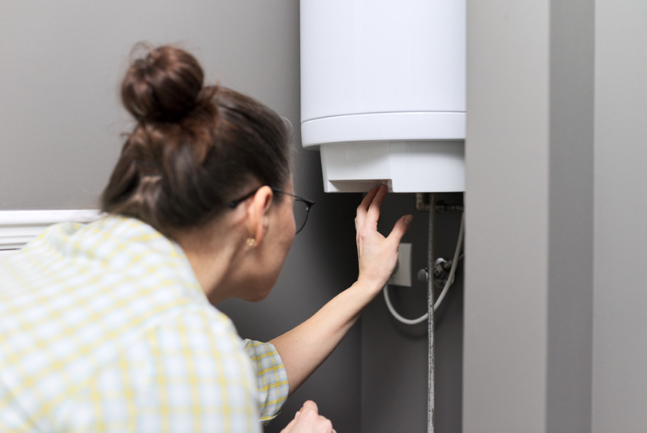
The average home in the United States uses a lot of energy (10,972 kWh per year on average, to be exact). As a result, American homeowners spend $1,411 on energy and emit about five tons of carbon every year.
Anyone who cares about saving money or cutting their carbon footprint would be smart to look for ways to cut their home’s energy usage. And while it doesn’t sound glamorous, one of the best ways to do that is to replace your hot water heater.
If our water heaters were a country, their total emissions would be responsible for more greenhouse gas emissions than Belgium.
Why American hot water heaters use so much energy
Almost every American home has either a conventional gas or an electric hot water heater. Even though the first hot water heaters were invented more than 100 years ago, the design of the hot water heater in your laundry room or basement isn’t much different than the first models designed back in the late 1800s.
They work in a pretty straightforward way. Electricity or gas heats up a big metal tank full of water and then pumps it throughout your home. But here’s the problem: these water heaters have no way to predict when you’ll need hot water, so they heat water at every hour of the day. That means that even if you’re on vacation or asleep, your hot water heater is heating water.
As a result, the average American family spends $600 per year and emits about a ton of CO2 to heat up water that for the most part they won’t use. In fact, if our water heaters were a country, their total emissions would be responsible for more greenhouse gas emissions than the entire nation of Belgium.
But, unlike many other environmental problems, the solution to this one is remarkably easy. And if you’re a homeowner, it’s largely in your control.
How other countries heat their water
If you’ve ever traveled to Europe, you may have noticed that their hot water heaters look different than the one in your house. Most European homes use tankless water heaters. They’re similar to conventional tanks in that they use electricity or gas to heat water, but instead of heating it at all hours of the day, they only heat it on-demand.
Unsurprisingly, these water heaters are a lot more efficient than conventional tanks. According to the National Resource Defense Council (NRDC), tankless models have about half the carbon footprint of conventional tanks.
Tankless water heaters are available in America. And compared to conventional tanks, they’re a lot better. But there’s an even more efficient option that’s become available in the last decade, and in many states the government will pay you as much as $750 to install it.
How heat pump (hybrid) water heaters work
For homeowners in America, the best bang for your energy-efficiency buck is the heat pump water heater (sometimes called a hybrid water heater).
Heat pump water heaters pull heat from the surrounding air to heat water, rather than relying on electricity or gas. In other words, they move energy instead of generating it. As researchers at the Department of Energy put it, “Heat pumps work like a refrigerator in reverse. While a refrigerator pulls heat from inside a box and dumps it into the surrounding room, a stand-alone air-source heat pump water heater pulls heat from the surrounding air and dumps it — at a higher temperature — into a tank to heat water.”
Today, most heat pump water heaters also include a back-up electric resistance heater in case the surrounding air temperature isn’t warm enough to use. That’s why they’re called hybrid heat pumps.
How hybrid water heaters cut costs and emissions
With the exception of solar water heaters (which cost between $3,000 and $10,000 in the US), heat pumps are the most energy-efficient water heaters available. That makes them the most eco-friendly, too. Their carbon footprint can be anywhere from two to four times lower than a conventional tank’s. That’s why environmental groups like the NRDC and the Rocky Mountain Institute love them.
Because heat pumps are so important to curbing climate change, the government will foot part of the bill. The federal government will give you a $300 tax credit for buying a heat pump. Some states give you a $750 instant rebate. And many of the biggest utilities will give you a $500 rebate. Visit the Database of State Incentives for Renewables & Efficiency to find which rebates and incentives you qualify for.
Even without incentives, the best heat pump on the market will save the average family $4,800 over 10 years and cut their carbon footprint by four tons (the equivalent of going vegan for two years or cutting back on four international flights).
Anyone familiar with climate change knows that there are a lot of tricky problems to solve. We need to invent electric planes and cargo ships and figure out a way to make things like steel and aluminum with a lot less electricity. But some of the solutions — whether it’s switching your home’s power source to renewables or replacing your inefficient water heater — are a lot easier. And considering American homes emit as much carbon as most industrialized countries, those solutions can make a big difference.

Recent Comments